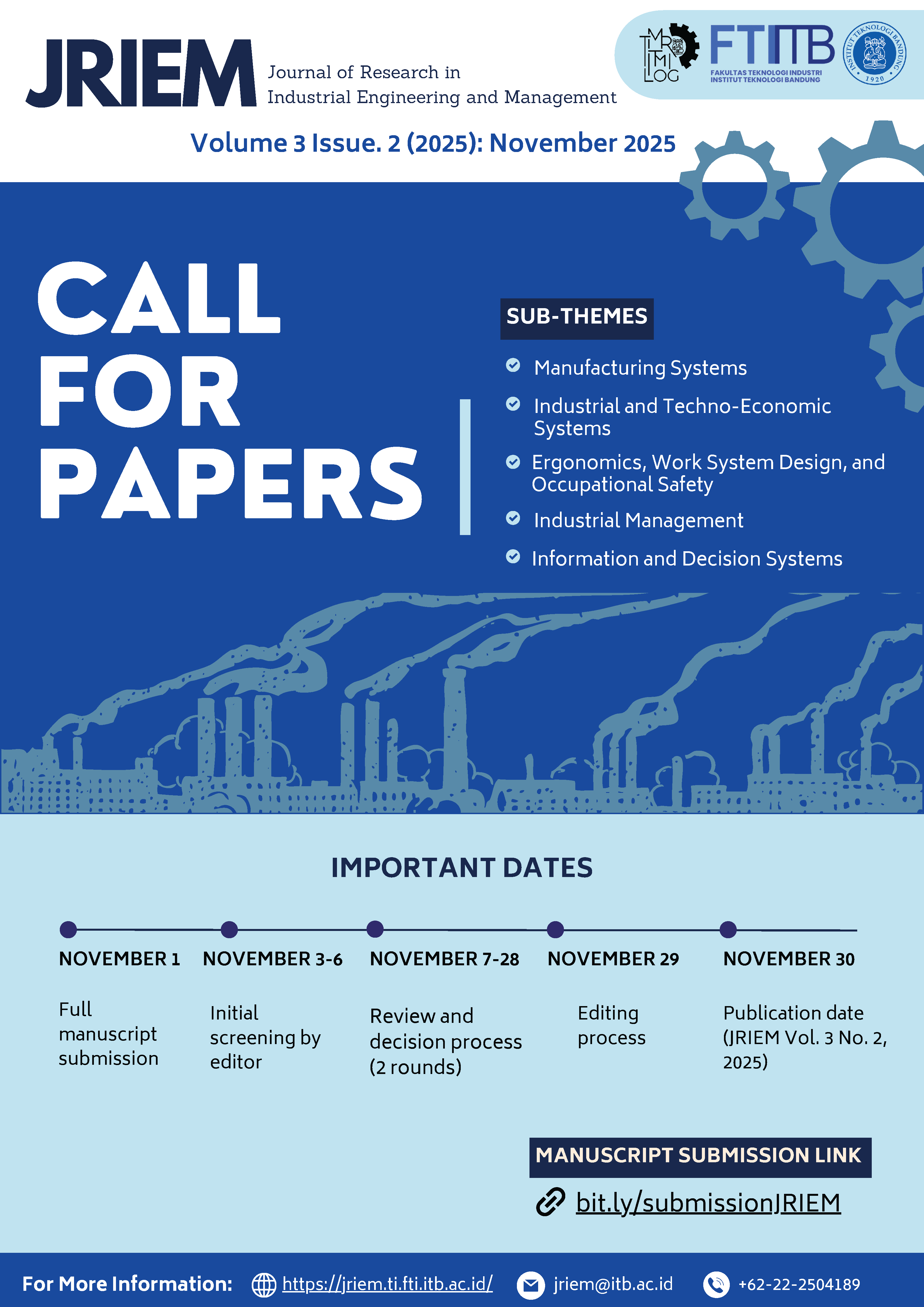EOQ Model for Perishable Items with Buyer Interest Decline Using Uniform Arrivals
DOI:
https://doi.org/10.61221/jriem.v3i1.27Keywords:
perishable items inventory, decline in buyer interest, uniform arrivalsAbstract
Inventory is a company asset in the form of idle resources or unused resources that needs to be minimized. One type of inventory is perishable items. Perishable items are products with a limited life cycle. This limited life cycle affects consumer interest in purchasing the product, leading to a decrease in consumer interest as the item approaches its expiration date. This results in a reduction in inventory value as purchases and product expiration occur. This study changes the arrival speed of goods from simultaneous to uniform, introducing a constant arrival speed (R) in the model formulation. The development of this model focuses on inventory systems for perishable items with a decline in buyer interest as the product life cycle decreases and products arrive uniformly. It is found that uniform arrival reduces the total cost compared to simultaneous arrival.
References
Bahagia, S. N. (2006). Sistem Inventori. ITB Press.
Boulaksil, Y. (2016). Safety stock placement in supply chains with demand forecast updates. Operations Research Perspectives, 3, 27–31.
Díaz, R. D. S., Paternina-Arboleda, C. D., Martínez-Flores, J. L., & Jimenez-Barros, M. A. (2020). Economic order quantity for perishables with decreasing willingness to purchase during their life cycle. Operations Research Perspectives, 7. https://doi.org/10.1016/j.orp.2020.100146
Gan, S.-S., Pujawan, I. N., Suparno;, & Widodo, B. (2018). Pricing decisions for short life-cycle product in a closed-loop supply chain with random yield and random demands. Operations Research Perspectives, 5, 174–190.
Ghare, P. M., & Schrader, G. H. (1963). A model for an exponentially decaying inventory. International Journal of Production and Research, 21, 449–460.
Haiping, X., & Wang, H.-P. (1990). An economic ordering policy model for deteriorating items with time proportional demand. European Journal of Operational Research, 46, 21–27.
Liming, L., & Din-Hua, S. (1999). An (s,S) model for inventory with exponential lifetimes and renewal demands. Naval Research Logistics, 46(1), 39–56.
Nahmias, S. (1982). Perishable Inventory Theory: A Review. Operation Research, 30, 680–708.
Panda, S., Saha, S., & Basu, M. (2011). AN EOQ MODEL WITH GENERALIZED RAMP-TYPE DEMAND AND WEIBULL DISTRIBUTION DETERIORATION. Asia-Pacific Journal of Operational Research, 24.
The Factory Management Series: Operation and costs. (1915). A.W. Shaw Company.
Wang, X., & Li, D. (2012). A dynamic product quality evaluation based pricing model for perishable food supply chains. Omega, 40, 906–917.
Downloads
Published
How to Cite
Issue
Section
License
Copyright (c) 2025 Andes Ginola, Angel Olivia Benedikta, Edwin Sutiana

This work is licensed under a Creative Commons Attribution 4.0 International License.




